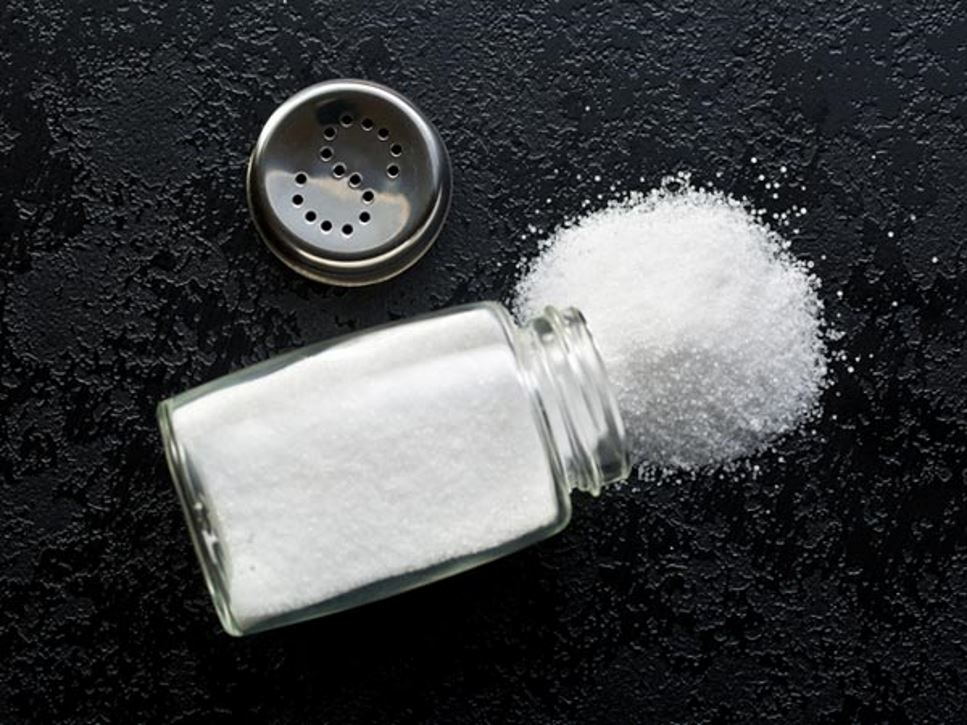Everybody has sodium in their diet; it's a fact of life. Sodium is an essential nutrient. Some of us, however, may be getting too much, and often we aren't even aware of where it's hiding in the foods we're eating. Learn why lowering your sodium intake may benefit your health.
Sodium Intake Adds Up
The good news first: Salt has many uses. It raises the boiling point of water, tenderizes meats and enhances the flavor of many foods. The bad news is that table salt contains 2,300 milligrams of sodium per teaspoon. For most people and children 14 years and older, the recommendation is to limit sodium to less than 2,300 milligrams per day. For those with existing blood pressure or other health concerns, the recommendation may be even lower. According to the Dietary Guidelines for Americans, children ages 1 through 3 are recommended to limit sodium intake to 1,200 milligrams per day; 1,500 milligrams per day for children ages 4 through 8; and 1,800 milligrams per day for ages 9 through 13.
It would be difficult to consume that much sodium in one concentrated bite. Instead, sodium intake adds up throughout the day. And based on estimates by the Centers for Disease Control and Prevention, only a small amount of the average Americans' daily intake comes from adding salt to food at the table. Salt in processed and ready-to-eat foods delivers the majority of sodium in our diets.
Sodium is prevalent in many of the foods we eat and in excess can be harmful to our health. However, a number of studies show that decreasing sodium intake can lower blood pressure. Consuming less than 2,300 milligrams of sodium per day for adults can have an additional impact of lowering blood pressure, especially when combined with the Dietary Approaches to Stop Hypertension, or DASH, eating plan, a fruit and vegetable-centered diet that is lower in sodium and fat. Good sources of potassium — an important mineral of the DASH diet which has been shown to help decrease blood pressure — include potatoes, sweet potatoes, squash, beans and orange juice.
Sodium's Hidden Sources
Beware: Sodium isn't only in salty snacks or the table shaker. Many of the already prepared foods and meals you consume at restaurants, cafes and grab-and-go items at grocery stores have sodium, because it's an inexpensive way to add flavor and is an effective way to preserve foods. Even foods with low to moderate sodium content can lead to a high sodium diet if you consume too much of them.
Topping the list for highest percentage of our daily sodium consumption are items such as bread, cold cuts and cured meats, pizza, fresh and processed poultry, soups, sandwiches (including burgers), cheese and pasta.
How to Reduce Sodium Intake
The best way to combat high sodium in your daily diet is to watch your intake of highly processed foods. Read the Nutrition Facts label and look for the Daily Value of sodium in the foods you eat. And consider these satisfying options to keep sodium under control: fruits and vegetables, unsalted nuts, legumes and whole grains (including brown rice, oats and barley).
Additional ways to lower sodium intake:
- Get more natural sources of potassium in your diet by including additional servings of fruits and vegetables.
- Watch portion sizes, especially when it comes to already prepared foods.
- Limit cured foods, including cold cuts and sausages.
- Rinse canned foods or look for no-salt added varieties.
- Choose lower sodium packaged foods.
- Remove the salt shaker from the table.
- Increase your intake of whole grains such as brown rice, quinoa, oats, bulgur, whole-wheat pasta and bread, wild rice and popcorn.
- Include beans, peas and more plant-based sources of protein.
- Substitute crackers and chips with a small amount of unsalted nuts.
Find a Nutrition Expert
Looking for credible nutrition information and recommendations? The Academy of Nutrition and Dietetics' network of credentialed food and nutrition practitioners are ready to help!

